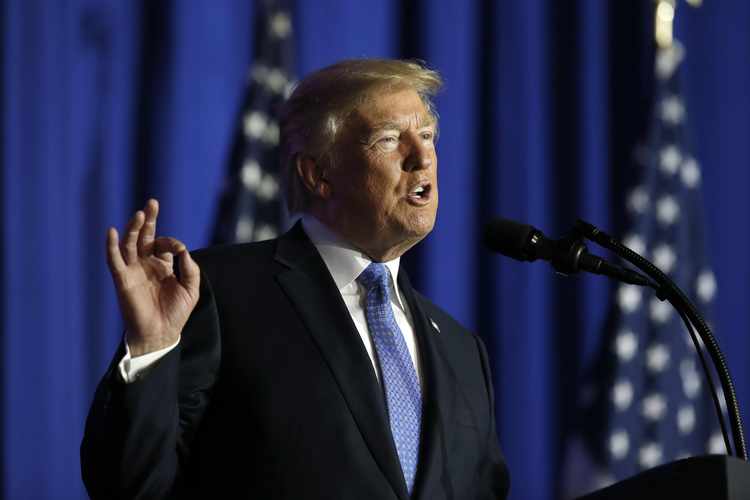By: John Heubusch – realclearpolitics.com – October 18, 2017
By making tax reform one of the policy pillars of his first year in office, President Trump has made at least one move that aligns himself with the standard-bearer of conservatism, Ronald Reagan. Trump has laid out a plan that advances President Reagan’s vision for strong economic growth through lower taxes, but what remains to be seen is whether he has the political will and skill to accomplish what Reagan so spectacularly did.
Action item No. 1 for Reagan’s administration was doing everything within his power to stoke the economy. “Stay the course,” he reminded Americans weary of double-digit inflation, soaring interest rates, and high unemployment.
Just 16 days after entering the White House, Reagan sent a bill to Congress calling for an across-the-board 30 percent tax cut over three years. Days later, he unveiled a plan to cut billions in federal spending called “America’s New Beginning: A Program for Economic Recovery.” That was February 1981. He toiled behind the scenes with a singular resolve to garner support for the Economic Recovery Tax Act of 1981.
No meeting to lobby members of Congress on both sides of the aisle was too small. At the time, I worked for a freshman congressman from Oregon. I vividly remember fielding the president’s call, quickly handing the phone over to my nervous, newly elected boss. His vote for the tax plan was secure, but Reagan called him anyway to make absolutely sure his votes were in hand. The tax cut bill became reality just six months after its introduction.
By the time Reagan left office, the top personal income tax rate had fallen from 70 percent to 28 percent. Reagan’s reforms also addressed the tax code’s complexity. When he took office, there were 16 different tax rates. By the time he left office, there were just three.
But in Washington, no change is permanent, and the power struggle between supporters of limited government and supporters of big government has fueled a tug of war over tax policy. Slowly but surely, complexity and costs have crept back into the tax system. As it stands today in the early months of the Trump presidency, there are seven tax brackets with the highest federal rate being 39.6 percent.
Enter Donald Trump, who, 250 days into his administration unveiled his “Unified Framework for Fixing Our Broken Tax Code.” Described as “simple, fair, and easy to understand,” the president characterized his plan as “revolutionary change.” Trump’s stated goals include reducing the number of tax brackets to three and reducing the top rate to 35 percent, simplifying the tax filing form to one page, and lowering the corporate rate to a more competitive 20 percent.
Reagan’s experience bears out Trump’s claim that a simpler tax system with lower rates leads to economic growth. When Reagan entered office, annual gross domestic product growth was 2.59 percent. By 1983, it had boomed to 4.6 percent, then to 7.3 percent in 1984 and so on during what became known as the “Seven Fat Years.”
By contrast, in the eight years of 2009 through 2016 under President Obama, the highest level of annual growth in real GDP was 2.6 percent in 2015.
To see more of this article, click read more.
 Listen Online
Listen Online Watch Online
Watch Online Find a Station in Your Area
Find a Station in Your Area










 Listen Now
Listen Now Watch Online
Watch Online
